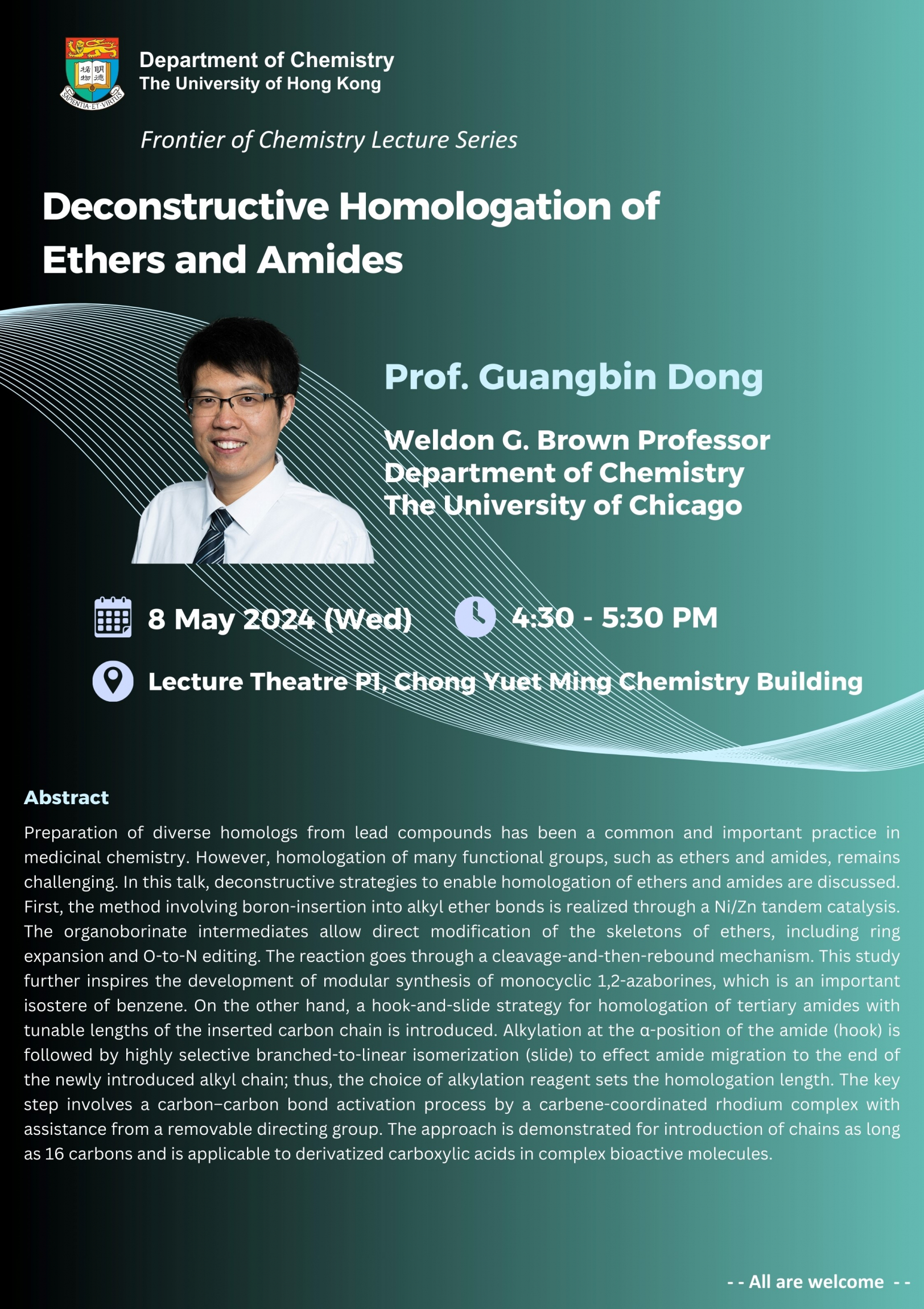| Date | 08 May 2024 |
| Time | 4:30 pm - 5:30 pm (HKT) |
| Venue | Lecture Theatre P1, Chong Yuet Ming Chemistry Building |
| Speaker | Prof. Guangbin Dong |
| Institution | Weldon G. Brown Professor, Department of Chemistry, The University of Chicago |
 Title:
Title:
Deconstructive Homologation of Ethers and Amides
Schedule:
Date: 8th May, 2024 (Wednesday)
Time: 4:30 - 5:30 pm (HKT)
Venue: Lecture Theatre P1, Chong Yuet Ming Chemistry Building
Speaker:
Prof. Guangbin Dong
Weldon G. Brown Professor
Department of Chemistry
The University of Chicago
Abstract:
Preparation of diverse homologs from lead compounds has been a common and important practice in medicinal chemistry. However, homologation of many functional groups, such as ethers and amides, remains challenging. In this talk, deconstructive strategies to enable homologation of ethers and amides are discussed. First, the method involving boron-insertion into alkyl ether bonds is realized through a Ni/Zn tandem catalysis. The organoborinate intermediates allow direct modification of the skeletons of ethers, including ring expansion and O-to-N editing. The reaction goes through a cleavage-and-then-rebound mechanism. This study further inspires the development of modular synthesis of monocyclic 1,2-azaborines, which is an important isostere of benzene. On the other hand, a hook-and-slide strategy for homologation of tertiary amides with tunable lengths of the inserted carbon chain is introduced. Alkylation at the α-position of the amide (hook) is followed by highly selective branched-to-linear isomerization (slide) to effect amide migration to the end of the newly introduced alkyl chain; thus, the choice of alkylation reagent sets the homologation length. The key step involves a carbon–carbon bond activation process by a carbene-coordinated rhodium complex with assistance from a removable directing group. The approach is demonstrated for introduction of chains as long as 16 carbons and is applicable to derivatized carboxylic acids in complex bioactive molecules
- ALL ARE WELCOME -
